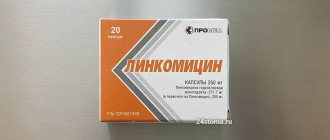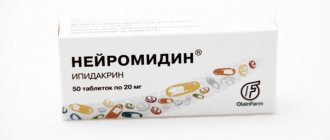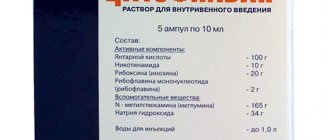Clotrimazole is a broad-spectrum antimycotic or antifungal agent. The antimycotic properties of clotrimazole were discovered in the late 1960s. The drug belongs to the category of imidazole azole antifungals. It is available in a variety of dosage forms, including creams, ointments, tablets, and slow-dissolving capsules.
Clotrimazole may be used to treat anemia
In addition to its antifungal activity, clotrimazole has become a drug of interest for the treatment of a number of other diseases, such as sickle cell disease, malaria and some types of cancer. This drug's minimal side effects and uncomplicated metabolic profile have led to its widespread use for the treatment of fungal outbreaks, such as vaginal infections caused by yeast spores (candida vulvitis or thrush), as well as athlete's foot.
Use of the drug
Clotrimazole cream is prescribed for the topical treatment of the following skin infections:
- Tinea pedis, tinea cruris and tinea corporis caused by Trichophyton rubrum, Trichophyton mentagrophytes, Floccosum Epidermophyton;
- Candidiasis caused by Candida albicans;
- Herpes zoster caused by Malassezia furfur;
- Diaper rash infected with Candida Albicans;
In some drugs, clotrimazole can be combined with betamethasone dipropionate and corticosteroids.
The oral formulation is indicated as a prophylactic drug to reduce the incidence of oral and pharyngeal candidiasis in immunocompromised patients receiving chemotherapy, radiation therapy, or steroid therapy used to treat leukemia, cancer, or kidney transplantation. The drug is not indicated for the treatment of any systemic mycoses.
Features of the composition and principle of operation
Clotrimazole is manufactured in several forms: in the form of suppositories, gels, creams and ointments. The last option is one of the most popular. The main component of the drug is clotrimazole, in a volume of 1 g, the list of additional ingredients is presented:
- propylene glycol;
- polyethylene oxide 400 and 1500;
- methylparaben.
The active ingredient disrupts the vital processes of the fungus that has entered the body and suppresses the production of ergosterol in it. Due to poor absorption, the main substance accumulates in the upper layer of the dermis, exerting an additional toxic effect on the parasite cells, with an increase in peroxide concentration and acceleration of destruction processes.
The activity of the drug has been confirmed in relation to:
- to dermatophytes;
- yeast, mold varieties;
- pathogens of various lichens and erythrasma.
A slight effect was noted when treating gram-positive and gram-negative bacteria. When applied, the product concentrates in the upper layers of the epidermis, practically without penetrating into the underlying tissues and bloodstream.
pharmachologic effect
Clotrimazole is a broad-spectrum antifungal agent that inhibits the growth of pathogenic yeasts by altering the permeability of cell membranes. The action of clotrimazole is fungistatic at concentrations of the drug up to 20 μg/ml and can be fungicidal in vitro against Candida albicans and other species of the genus Candida at higher concentrations. Unfortunately, resistance to clotrimazole, which was rare in the past, is now common among various patient groups.
The drug Clotrimazole fights fungus well
Clotrimazole is generally considered a fungistatic rather than a fungicidal drug, although this difference is not absolute as clotrimazole exhibits fungicidal properties at higher concentrations.
The action of the drug is based primarily on damage to the permeability barrier in the cell membrane of fungi. Clotrimazole inhibits the biosynthesis of ergosterol, an essential component of fungal cell membranes. If ergosterol synthesis is either completely or partially inhibited, the cell is no longer able to create an intact and functional cell membrane. Since ergosterol directly stimulates the growth of fungal cells in a hormone-like manner, the rapid onset of the above processes results in dose-dependent inhibition of fungal growth.
Although there is a decrease in ergosterol, due to the inhibition of lanosterol 14-demethylase (also known as CYP51), which is believed to be responsible for the antifungal properties of clotrimazole, this drug also exhibits other pharmacological effects. These include inhibition of sarcoplasmic reticulum Ca2+ -ATPase, intracellular calcium depletion, and blockade of calcium-gated potassium channels and voltage-gated calcium channels. The action of clotrimazole on these complexes explains other effects of this drug that differ from its antifungal activity.
Buy Clotrimazole cream 1% 20g in pharmacies
Instructions for use Clotrimazole cream 1% 20g Dosage forms cream 1% 20g Synonyms Candide Candide-B6 Kanizon Clotrimazole-Acri Group Antifungal agents - derivatives of imidazole and triazole International nonproprietary name Clotrimazole Composition Active substance - clotrimazole. Pharmacological action Clotrimazole is a broad-spectrum antifungal agent for topical use. The antimycotic effect of the active substance clotrimazole (imidazole derivative) is associated with a disruption in the synthesis of ergosterol, which is part of the cell membrane of fungi, which changes the permeability of the membrane and causes subsequent cell lysis. In small concentrations it has a fungistatic effect, and in large concentrations it has a fungicidal effect, and not only on proliferating cells. At fungicidal concentrations, it interacts with mitochondrial and peroxidase enzymes, resulting in an increase in the concentration of hydrogen peroxide to a toxic level, which also contributes to the destruction of fungal cells. Effective against dermatophytes, yeast-like and mold fungi, as well as the causative agent of pityriasis versicolor (Malazessia furfur) and the causative agent of erythrasma. It has an antimicrobial effect against gram-positive (staphylococci, streptococci) and gram-negative bacteria (Bacteroides, Gardnerella vaginalis), as well as against Trichomonas vaginalis. Pharmacokinetics Clotrimazole is poorly absorbed through the skin and mucous membranes and has virtually no systemic effect. The concentration in the deep layers of the epidermis is higher than the minimum inhibitory concentration for dermatophytes. When applied externally, the concentration of clotrimazole in the epidermis is higher than in the dermis and subcutaneous tissue. Side effects : Itching, burning, tingling in areas where the ointment is applied, the appearance of erythema, blisters, swelling, irritation and peeling of the skin. Allergic reactions (itching, urticaria). Indications for use Fungal diseases of the skin, mycoses of skin folds, feet; pityriasis versicolor, erythrasma, superficial candidiasis caused by dermatophytes, yeast (including the genus Candida), mold and other fungi and pathogens sensitive to clotrimazole; mycoses complicated by secondary pyoderma. Contraindications Hypersensitivity to clotrimazole or excipients, first trimester of pregnancy. Directions for use and dosage Externally. The ointment is applied in a thin layer 2-3 times a day to previously cleansed (using soap with a neutral pH value) and dry affected areas of the skin and rubbed in gently. The duration of treatment depends on the severity of the disease, the location of pathological changes and the effectiveness of therapy. Treatment of dermatomycosis is carried out for at least 4 weeks, pityriasis versicolor - 1-3 weeks. For fungal diseases of the skin of the legs, it is recommended to continue therapy for at least 2 weeks after the symptoms of the disease have resolved. Overdose The use of ointment in high doses does not cause any reactions or life-threatening conditions. Interaction Amphotericin B, nystatin, natamycin reduce the effectiveness of clotrimazole when used simultaneously. When using the ointment, negative interactions with other agents are unknown and should not be expected, since the resorption capacity of clotrimazole is very low. Special instructions Be careful during lactation. Use during pregnancy and breastfeeding. Clinical and experimental studies have not found that the use of the drug during pregnancy or breastfeeding has a negative effect on the health of the woman or fetus (child). However, the question of the advisability of prescribing the drug should be decided individually after consulting a doctor. Application of the drug directly to the lactating mammary gland is contraindicated. It is not recommended to apply the drug to the skin in the eye area. When treating onychomycosis, it is necessary to ensure that the treated nail plates are cut short or have a rough surface for better penetration of the active substance. In these cases, preference should be given to the solution due to its better penetrating properties. In patients with liver failure, the functional state of the liver should be periodically monitored. If signs of hypersensitivity or irritation appear, treatment is stopped. If there is no effect within 4 weeks, the diagnosis should be confirmed. Storage conditions Store in a dry place, protected from light, out of reach of children at a temperature not exceeding 20 C.
Overdose
Symptoms of overdose include erythema, tingling, blistering, peeling, swelling, itching, urticaria, burning and general skin irritation, and cramps. As with all topical medications, skin sensitization may occur.
Clotrimazole does not pose a risk of acute toxicity as it is unlikely to occur after a single vaginal or cutaneous application. Overdose when applied is possible over a large area under conditions favorable for absorption, or accidental oral administration. There is no specific antidote.
Peculiarities
Clotrimazole should not be used during the first trimester of pregnancy unless the doctor considers its use necessary for the patient's health. The drug should not be used during menstrual periods in the treatment of candidiasis vulvitis (thrush). If breastfeeding, clotrimazole can be used only as prescribed by your doctor.
The drug weakens the effect of nystatin, natamycin, amphotericin B when used simultaneously. The cream is not used to treat nails or fungal diseases of the head.
For external use, Clotrimazole cream is rubbed into the affected areas of the skin. Do not apply the product to the area around the eyes.
Clotrimazole is not prescribed to infants and premature infants
To treat candidiasis vulvitis, the capsule is inserted into the vulva, and the perineal area and mucous tissues are treated with cream. During treatment of candidal vulvitis, unprotected sex should be avoided so as not to infect the partner. If infection does occur, treatment should also be carried out by the partner. When carrying out therapy with the drug, tampons, spermicides and other vaginal products should not be used.
Application and dosage
Clotrimazole in cream form is available in 20 gram tubes. 1 gram of the drug contains 20 mg of active substance.
The drug is rubbed into the affected areas of the skin in a thin layer 2-3 times a day.
The duration of the course of therapy is:
- dermatomycosis - 3-4 weeks;
- erythrasma - 2-4 weeks;
- lichen versicolor - 1-3 weeks;
- candidal vulvitis and candidal balanitis - 1-2 weeks.
To consolidate the positive results of treatment and prevent re-development of the disease, the course can be continued for 2 weeks after the symptoms of the disease disappear.
If the patient's condition does not improve after 4 weeks of using the drug, you should consult a doctor.
If you have hypersensitivity to the drug, allergic reactions, headaches, or other side effects, you should consult a doctor. When prescribing a course of treatment, the patient must report a history of sexually transmitted diseases, allergic reactions, if the patient’s temperature is above 38C.
Clotrimazole
Clotrimazole
(Latin
Clotrimazolum
, English
clotrimazole
) is a broad-spectrum antifungal drug, an imidazole derivative. Acts mainly on microorganisms in the stage of division and growth. Clotrimazole is poorly absorbed when taken orally, it cannot be administered parenterally and is used almost exclusively for the local treatment of diseases of the oral cavity, skin and gynecological diseases.
Clotrimazole is a chemical compound
The chemical name of clotrimazole is 1-[(2-chlorophenyl)diphenylmethyl]-1H-imidazole.
The empirical formula of clotrimazole is C22H17ClN2. Molecular weight 345 g/mol. White crystalline substance, odorless. Almost insoluble in water, slightly soluble in ether, very soluble in ethanol and polyethylene glycol 400.
Microorganisms against which clotrimazole is active or inactive
Mushrooms:
- Clotrimazole is active against yeast fungi: Candida spp.
(including
Candida albicans
and
Candida glabrata
(
Torulopsis glabrata
) and excluding
Candida guillermondii
),
Rhodotorula spp., Malassezia furfur (Pityrosporum orbiculare), Blastomyces dermatitidis - active against dermatophytes: Trichophyton rubrum, Trichophyton mentagrophytes, Epidermophyton floccosum, Arthroderma otae (Microsporum canis)
- Clotrimazole resistant: Candida guillermondii
Bacteria:
- clotrimazole has antibacterial activity in vitro against strains of gram-positive bacteria: Staphylococcus spp.
(including
Staphylococcus aureus), Streptococcus spp
.
(including Streptococcus pyogenes), Proteus vulgaris, Corynebacterium minutissimum, Salmonella spp. - clotrimazole is active against gram-negative (gram-variable) bacteria: Bacteroides spp., Gardnerella vaginalis
- resistant to clotrimazole: Escherichia coli, Klebsiella pneumoniae, Proteus mirabilis
and
Pseudomonas aeruginosa
Protists: Clotrimazole in high concentrations is active against Trichomonas vaginalis
.
Clotrimazole in ATC
Clotrimazole is the international nonproprietary name (INN) of the drug. In ATC, clotrimazole is included in a number of different groups, each of which has its own code, in particular:
- "A01 Dental preparations", "A01AB Antimicrobial preparations for local treatment of diseases of the oral cavity", code A01AB18
- "D01 Antifungal drugs for the treatment of skin diseases", "D01AC Imidazole and triazole derivatives", code D01AC01
- “G01 Antiseptics and antimicrobials for the treatment of gynecological diseases”, “G01AF Imidazole derivatives”, code G01AF02
Indications for use of clotrimazole
Clotrimazole is indicated for diseases of the skin, oral cavity, mucous membranes of the female and male genital organs with microorganisms sensitive to it:
- fungal infections of the skin and mucous membranes: dermatomycosis, dermatophytosis, trichophytosis, epidermophytosis, microsporia, candidiasis, stomatitis, interdigital fungal erosion, fungal paronychia
- candidiasis vulvitis, vulvovaginitis
- balanitis, balanoposthitis
- trichomoniasis
- lichen: pityriasis versicolor or versicolor
- erythrasma
- mycoses complicated by secondary pyoderma
Order of use of clotrimazole and dose
Fungal skin infections, erythrasma, lichen
. Clotrimazole ointment, cream or solution is applied in a thin layer to the affected areas of the skin and mucous membranes 2-4 times a day and rubbed in gently. The duration of therapy is about 4 weeks, or until the clinical manifestations disappear and another 2 weeks (for fungal infections of the legs - 2-3 weeks).
In the treatment of oral
: 0.5–1 ml (10–20 drops) of clotrimazole solution, using, for example, a cotton swab, is applied to the affected areas of the oral mucosa 3-4 times a day.
At least 3-5 days of treatment; Duration of treatment: from 3 or more days until complete recovery.
Mild balanoposthitis
Balanitis, vulvitis
. 2-3 times a day for 1-2 weeks - clotrimazole ointment, cream or solution.
Vaginitis, trichomoniasis
. Vaginal tablets are inserted deep into the vagina, once a day, in the evening: either 6-7 days, 100 mg of clotrimazole, or 3 days, 200 mg of clotrimazole, or 1 day, 500 mg of clotrimazole. The cream, a full applicator, is inserted into the vagina as deeply as possible once a day, before bedtime.
Candidal esophagitis
. Clotrimazole 10 mg tablets, sucked every 6 hours (Harrison's Handbook of Internal Medicine).
Sanitation of the birth canal
- 1 tablet of clotrimazole once.
In the absence of clinical effect
within 4 weeks, a repeated study is required to determine the infectious agent.
Use of clotrimazole in pregnant and nursing mothers
The FDA risk category for the use of clotrimazole in pregnant women is B (animal studies have not revealed a risk of adverse effects on the fetus; there have been no adequate studies in pregnant women).
It is not recommended to use clotrimazole in the first trimester of pregnancy. In the II-III trimesters, it is not recommended to use intravaginal applicators. Since there are no reliable studies confirming or refuting the excretion of clotrimazole into breast milk, therapy with clotrimazole for nursing mothers is not recommended.
Trade names of drugs with the active substance clotrimazole
The following drugs with the active substance clotrimazole are (have been) registered in Russia: Amyclone, Antifungol, Gine-Lotrimin, Imidil, Yenamazol 100, Candibene, Candid, Candid-B6, Candizol, Kanesten, Kanizon, Clotrimazole, Clotrimazole-Acri, Clotrimazole-Teva , Lotrimin, Faktodin.
See also (pdf): “Instructions for use of the drug for medical use Clotrimazole-Teva.”
Clotrimazole has contraindications and side effects; before use, consultation with a specialist is necessary.
Back to section





